Pongal: The Great Indian Thanksgiving Festival
A vast majority of Indian people solely depend on agriculture. As a result, we find that most Hindu festivals are directly or indirectly linked to agriculture.
Seventy percent of India's population lives in villages, and a vast majority of people solely depend on agriculture. As a result, we find that most Hindu festivals are directly or indirectly linked to agriculture and related activities. Pongal is one such big festival, celebrated every year in mid-January, mostly in the south of India and especially in Tamil Nadu, to mark the harvest of crops and offer a special thanksgiving to God, the sun, the earth, and the cattle.
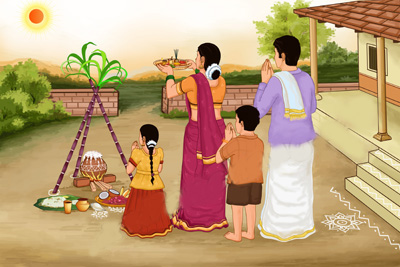
Source : easyday
What Is Pongal?
Pongal is a Hindu festival that is celebrated mostly in the Southern part of India and it lasts for a period of three days. The festival is observed during winter solstice when the Sun which has reached the Southern most part gets back to the North and comes again into the Capricorn sign that happens generally on 14th of January.
Few preceding days of Pongal are considered inauspicious while some of the following days of Pongal are considered really auspicious when people get into any new venture. Name Pongal has come from Tamil word which means to boil. On this day, rice is first boiled in milk and then it is offered to God as a means of showing gratitude. After that, the boiled rice is offered to cow and then to all the members of the family. On the day of Pongal, cows are beautifully embellished, garlanded with fruits and flowers and are freed to gaze around happily.
Denoting the Cycle of Season
The Pongal festival is also associated with the annual seasonal cycle and it is also celebrated to denote the going back of the Southeast Monson in South India. Pongal is a way of bidding adieu to the old season and giving warm welcome to a fresh and new one.
Day 1 : Bhogi Pongal
Bhogi Pongal is a day for the family, for domestic activities and of being together with the members of the household. This day is celebrated in honor of Lord Indra, "the Ruler of Clouds and Giver of Rains".
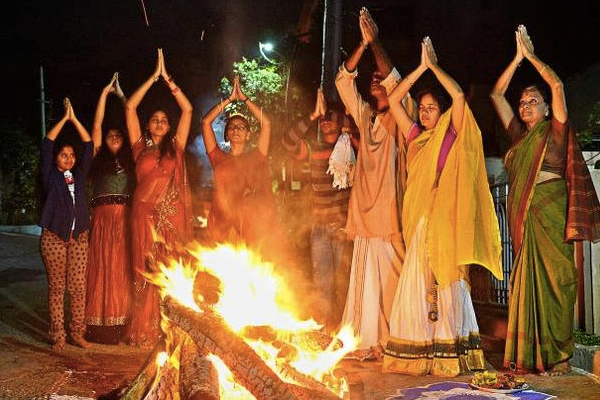
Source : newsaurchai
On the first day of Pongal, a huge bonfire is lit at dawn in front of the house and all old and useless items are set ablaze, symbolic of beginning a fresh new year. The bonfire burns through the night as young people beat little drums and dance around it. Homes are cleaned and decorated with "Kolam" or Rangoli --floor designs drawn in the white paste of newly harvested rice with outlines of red mud. Often, pumpkin flowers are set into cow-dung balls and placed among the patterns.
A fresh harvest of rice, turmeric, and sugarcane is brought in from the field as preparation for the following day.
Day 2 : Surya Pongal
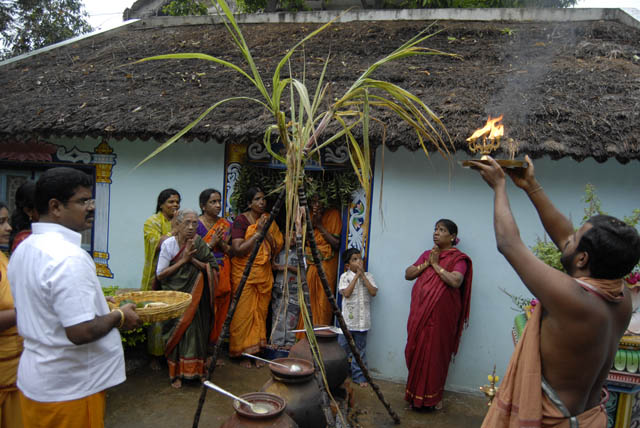
Source : narayanipeedam
The second day is dedicated to Lord Surya, the Sun God, who is offered boiled milk and jaggery. A plank is placed on the ground, a large image of the Sun God is sketched on it, and Kolam designs are drawn around it. This icon of the Sun God is worshiped for divine benediction as the new month of 'Thai' begins.
Day 3 : Mattu Pongal
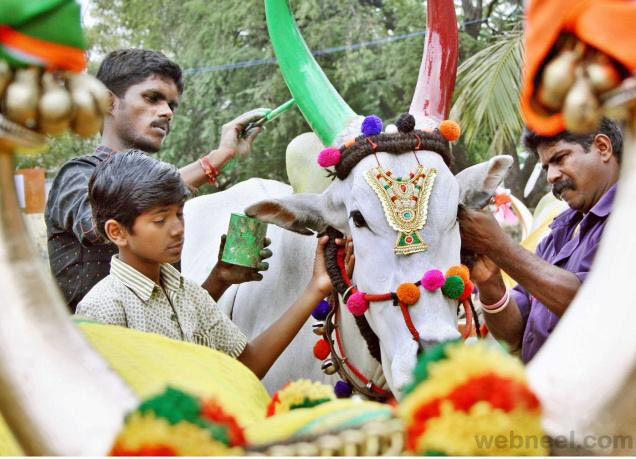
Source : webneel
This third day is meant for the cattle ('mattu'), the giver of milk and puller of the plow. The farmer's 'dumb friends' are given a good bath, their horns are polished, painted and covered with metal caps, and garlands are put around their necks. The pongal that has been offered to the gods is then given to the cattle to eat. They are then taken out to the racing tracks for cattle race and bullfight(Jallikattu) an event full of festivity, fun, frolic, and revelry.
Day 4 : Kanya Pongal
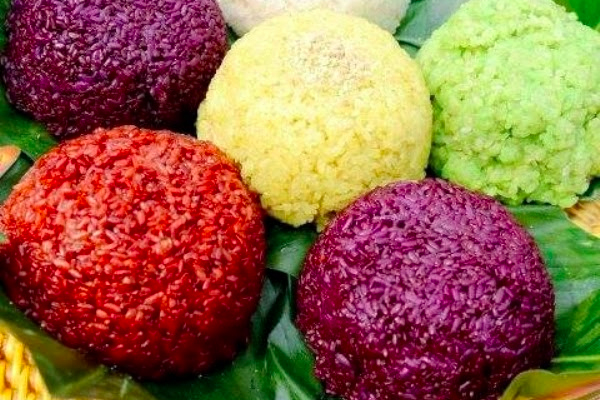
Source :newsaurchai
The fourth and final day marks the Kanya Pongal when birds are worshiped. Girls prepare colored balls of cooked rice and keep them in the open for birds and fowls to eat. On this day sisters also pray for their brothers' happiness.
Pongal also has some interesting legends attached to it. But surprisingly, this festival has little or no mention in the Puranas, which are usually bristled with tales and legends related to festivals. This is perhaps because Pongal is preeminently a Dravidian harvest festival and has somehow managed to keep itself away from the preponderance of Indo-Aryan influences.
Regional Variations in Celebration of Pongal
Pongal is associated with many legends but one of the most popular ones is the legend of Govardhan Mountain and legend of Lord Shiva and his bull, Nandi. According to the legend of Govardhan Mountain, Lord Krishna lifted the mountain on his little finger on Bhogi, which is the first day of Pongal, to protect the cattle and people from Indra, an angry rain god.
According to the legend of Lord Shiva, on the third day of Pongal, Lord Shiva sent his bull Nandi to tell people to have oil bath daily and eat once a month. However, Nandi became confused and told people to eat daily and bathe once a month. This angered Lord Shiva so he placed Nandi on earth to help humans harvest for more food, therefore Pongal became a harvest festival.
Pongal has many regional names. The most popular variations are:
- Makar Sankranti
- Lohri
- Bihu
- Hadaga
- Poki
Pongal festivities also vary slightly in celebration.
Symbols commonly associated with Pongal are:
- The Sun.
- The chariot
- Wheat grains
- The sickle.
- Kolam.
Most of these symbols are related to agriculture and the Sun. For example, the symbol of the chariot refers to the sun chariot. Hindus believe that the sun god moves around the Earth in his chariot.